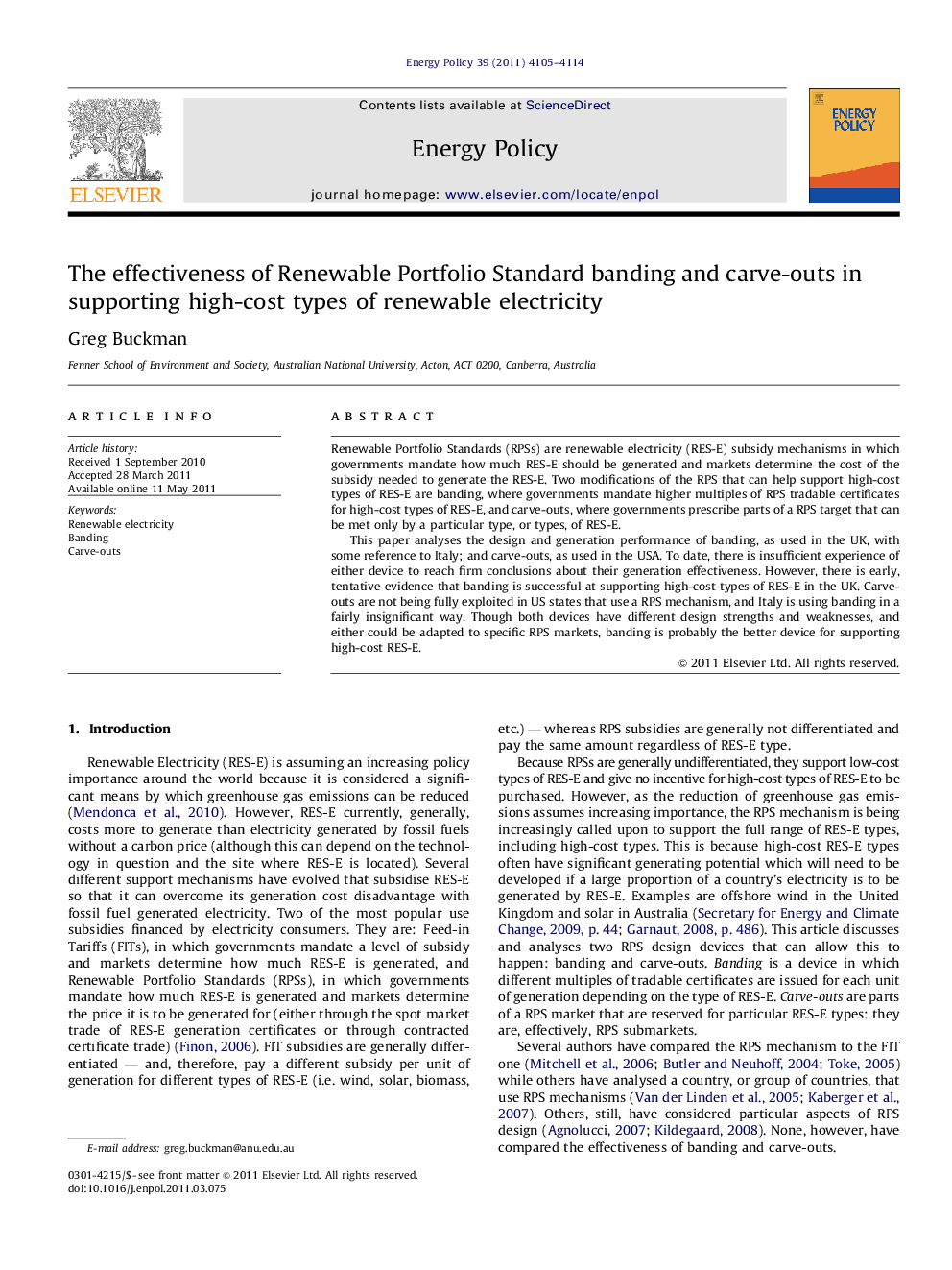| Article ID | Journal | Published Year | Pages | File Type |
|---|---|---|---|---|
| 993496 | Energy Policy | 2011 | 10 Pages |
Renewable Portfolio Standards (RPSs) are renewable electricity (RES-E) subsidy mechanisms in which governments mandate how much RES-E should be generated and markets determine the cost of the subsidy needed to generate the RES-E. Two modifications of the RPS that can help support high-cost types of RES-E are banding, where governments mandate higher multiples of RPS tradable certificates for high-cost types of RES-E, and carve-outs, where governments prescribe parts of a RPS target that can be met only by a particular type, or types, of RES-E.This paper analyses the design and generation performance of banding, as used in the UK, with some reference to Italy; and carve-outs, as used in the USA. To date, there is insufficient experience of either device to reach firm conclusions about their generation effectiveness. However, there is early, tentative evidence that banding is successful at supporting high-cost types of RES-E in the UK. Carve-outs are not being fully exploited in US states that use a RPS mechanism, and Italy is using banding in a fairly insignificant way. Though both devices have different design strengths and weaknesses, and either could be adapted to specific RPS markets, banding is probably the better device for supporting high-cost RES-E.
► I analysed three countries that use either Renewable Portfolio Standards banding or carve-outs. ► I assess whether banding or carve-outs have diversified renewable electricity generation. ► There's insufficient banding/carve-out experience to reach firm diversification conclusions. ► There's early evidence that the UK banding is diversifying its renewable electricity.
